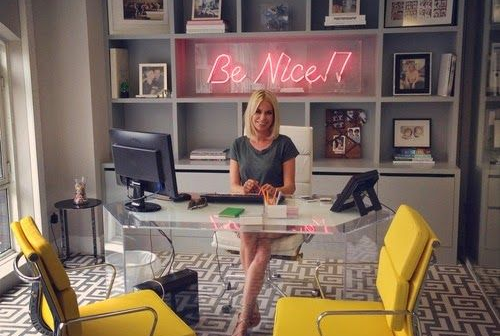Introduction to the Evolution of Office Furniture
When you step into an office, the first thing you notice is the furniture. It’s more than just a functional necessity; it’s a reflection of the company’s identity, culture, and values. As workspaces have evolved over the years, so has office furniture. It has transcended from being merely utilitarian to becoming an essential part of the office decor, contributing significantly to the aesthetic appeal and comfort level of the space.
In the early days, office furniture was all about functionality. The design was simple, the materials were basic, and the focus was on durability rather than style. However, with time, the perception of office furniture began to change. As businesses started to understand the importance of a well-designed workspace, they began to invest more in their office decor. This marked the beginning of the evolution of office furniture.
Today, office furniture is no longer just about providing a place to sit and work. It’s about creating an environment that inspires creativity, boosts productivity, and enhances the overall wellbeing of the employees. From ergonomic chairs and adjustable desks to breakout furniture and collaborative workspaces, modern office furniture is all about flexibility, adaptability, and personalization.
The Importance of Office Decor in the Modern Workspace
The modern workspace is a far cry from the traditional cubicle-laden office layout. Today, it’s all about creating a space that is conducive to innovation, collaboration, and productivity. And office decor plays a pivotal role in achieving this. It’s not just about making the office look good; it’s about creating an environment that resonates with the employees and makes them feel comfortable, motivated, and valued.
A well-designed office decor can significantly influence the mood and productivity of the employees. Studies have shown that a visually appealing workspace can boost employee morale, reduce stress, and increase job satisfaction. It can also enhance the company’s image and reputation, making it more attractive to potential employees and clients.
Incorporating elements such as natural light, indoor plants, and comfortable seating can make a significant difference to the overall ambiance of the office. Similarly, choosing the right color palette can impact the employees’ mood and productivity. For instance, blues and greens are known to induce a sense of calm and focus, while yellows and oranges can stimulate creativity and energy.
A Brief History of Office Furniture
The history of office furniture is a fascinating journey that reflects the changing dynamics of the workplace. In the early 20th century, office furniture was primarily designed for efficiency and productivity. The focus was on creating a uniform, standardized layout that made it easy to supervise and control the workers.
However, as the nature of work began to change, so did the design of office furniture. With the advent of computers and the shift towards knowledge-based work, the office started to transform into a more collaborative and flexible space. This led to the introduction of modular furniture and open-plan layouts.
The turn of the century marked a significant shift in office furniture design. As companies started to recognize the impact of the physical environment on employee wellbeing and productivity, workplace design started to become more human-centric. This led to the rise of ergonomic furniture, designed to support the natural posture and reduce the risk of work-related injuries.
The Role of Business Logos in Office Decor
In today’s competitive business landscape, creating a strong brand identity is crucial. And one of the most effective ways to reinforce this identity is through office decor. Incorporating the business logo into the office decor can serve as a powerful visual reminder of the company’s values, mission, and culture.
A well-designed business logo can create a strong first impression on clients and visitors. It can convey the company’s professionalism, credibility, and commitment to quality. Moreover, it can serve as a source of pride and motivation for the employees, fostering a sense of belonging and loyalty.
However, incorporating the business logo into the office decor is not just about putting it on the wall. It’s about integrating it seamlessly into the overall design of the workspace, from the color scheme to the furniture selection. It’s about creating a cohesive and consistent visual experience that reflects the brand’s personality and ethos.
Exploring Modern Office Furniture Trends
Modern office furniture trends are largely driven by the changing nature of work and the evolving needs of the workforce. Some of the key trends in office furniture today include ergonomic design, flexible furniture, collaborative workspaces, and biophilic design.
Ergonomic design focuses on creating furniture that supports the natural posture and reduces the risk of work-related injuries. This includes features such as adjustable desks, chairs with lumbar support, and monitor stands that allow employees to work in a comfortable and healthy manner.
Flexible furniture is designed to adapt to the changing needs of the workspace. This includes modular furniture that can be easily reconfigured, multi-purpose furniture that can serve multiple functions, and mobile furniture that can be easily moved around.
Collaborative workspaces are designed to encourage teamwork and interaction. This includes open-plan layouts, breakout areas, and meeting pods that facilitate communication and collaboration.
Biophilic design integrates elements of nature into the workspace. This includes indoor plants, natural light, and nature-inspired textures and patterns.
The Rise of Neon and LED Signs in Office Decor
One of the most striking trends in modern office decor is the LED neon sign. These vibrant, eye-catching signs are a great way to add a touch of personality and creativity to the workspace. They can be used to display the company’s logo, mission statement, or motivational quotes, creating a dynamic and engaging visual experience.
Neon signs have a unique retro charm that can add a touch of nostalgia and character to the office. They can create a warm, inviting ambiance and serve as a focal point in the decor. LED signs, on the other hand, offer a more modern, sleek look. They are energy-efficient, durable, and versatile, making them a popular choice for office decor.
Both neon and LED signs can be customized to match the company’s brand colors and style, making them a great way to reinforce the brand identity. They can also be used to create different moods and zones within the office, from a relaxed lounge area to a lively brainstorming space.
Incorporating Your Business Logo into Your Office Decor
Incorporating your business logo into your office decor is a great way to reinforce your brand identity and create a cohesive visual experience. Here are a few ways to do it:
- Wall decals: A large wall decal of your business logo can serve as a powerful focal point in your office. You can place it in the reception area, meeting room, or any other high-visibility spot.
- Furniture: You can get custom-made furniture that incorporates your business logo in the design. This could be a conference table with your logo etched into the surface, chairs with your logo embroidered on the backrest, or a reception desk with your logo inlaid in the front.
- Lighting: You can use neon or LED signs to create a luminous display of your business logo. You can also use backlit panels or projection lighting to highlight your logo on the wall.
- Accessories: You can use smaller decor items like rugs, cushions, or wall art to display your business logo. These can add a subtle touch of branding without being too overpowering.
Remember, the key is to incorporate your business logo in a way that complements the overall design of your office decor. It should enhance the visual appeal of the space, not detract from it.
The Impact of Modern Decor Trends on Office Furniture Design
Modern decor trends have a significant impact on office furniture design. As the focus shifts towards creating a more comfortable, flexible, and inspiring workspace, office furniture is evolving to meet these needs.
One of the key trends influencing office furniture design is the movement towards more ergonomic and user-friendly designs. As companies become more aware of the importance of employee wellbeing, they are investing in furniture that supports the natural posture and reduces the risk of work-related injuries. This includes features like adjustable height desks, chairs with lumbar support, and monitor stands that help maintain the correct eye level.
Another important trend is the integration of technology into office furniture. With the rise of digital work, furniture is being designed to accommodate various tech devices and facilitate seamless connectivity. This includes desks with built-in charging ports, conference tables with integrated screens, and seating with embedded touch controls.
The trend towards more flexible and adaptable workspaces is also shaping the design of office furniture. As companies move away from fixed layouts and towards more dynamic, collaborative spaces, furniture is being designed to be easily reconfigurable and mobile.
Future Trends in Office Furniture and Decor
As we look towards the future, several trends are set to shape the evolution of office furniture and decor. One of the key trends is the shift towards more sustainable and eco-friendly designs. As companies become more conscious of their environmental impact, they are seeking furniture that is made from sustainable materials and designed for longevity.
Another trend is the rise of smart furniture. As technology continues to advance, we can expect to see more furniture with integrated tech features, from desks with built-in AI assistants to chairs that can monitor and adjust your posture.
The trend towards more flexible and adaptable workspaces is also set to continue. As the boundaries between work and life continue to blur, office furniture will need to be more versatile and multi-functional, capable of catering to a variety of work styles and scenarios.
Conclusion
The evolution of office furniture is a reflection of the changing dynamics of the workplace. As our understanding of work and wellbeing continues to evolve, so does our approach to office decor. Whether it’s the rise of ergonomic design, the integration of business logos, or the use of neon and LED signs, modern decor trends are reshaping the way we design and experience the workspace.
Understand the importance of creating an inspiring, comfortable, and productive workspace.




